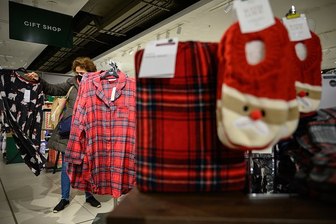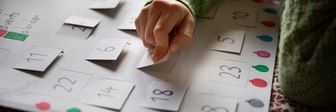In June, Camelot revealed that its yearly ticket sales had fallen 8.8% and that it anticipated further sales decline in 2017-18.
YouGov data helps to underline where the brand remains strong, where it is struggling, and whether an emphasis on online could help attract a new generation of players.
Brand use and perception
Recent YouGov Omnibus data indicates that 10% Britons play Lotto twice a week (Wednesday and Saturday), while 9% do it weekly. Close to one in seven (15%) play every few months, and one in ten (10%) say they do it less than once a year. Over four in ten (45%) say they never play.
Half (55%) of those who play at least once a week have built up a routine, regularly choosing the same numbers (Among all players, 29% do the same, against 62% that go for a lucky dip).
Perception of the wider National Lottery brand remains strong. YouGov plan and track data shows that among all respondents its Impression score (whether someone has a positive impression of the brand) remains at a solid at +11. Among those who are current Lottery customers, the score rises to +35.
However there has been a drop in other metrics over the past two years. In June 2015, the National Lottery’s Value score (whether the brand is seen as providing value for money) stood at -10. Fast forward to the current day and its score is -20. This can be attributed to price rises across Camelot’s range – such as the Euromillions increase in July 2016.
There clearly remains an appetite for the game and a connection to the brand, which has been fostered over many years. But is this enough to ensure it has a bright future?
It could be … losing its relevance?
One ongoing challenge the National Lottery faces is appealing to younger players. Our data indicates that of those that played either online or offline within the past 12 months, 37% were over 60 years old, 41% were aged 40-59, while only 3% were in the 18-24 age bracket.
Of course, this is not just a challenge that is limited to the gambling industry, whether that is online or offline. Our data reflects this trend of changing consumer habits in general retail, the fashion industry and the technology sector to name but a few. However, National Lottery may be concerned that where younger generations choosing to gamble, their first instinct could be to bet on sports, or something they can see the results of there and then.
Linked to this is the move of the draw itself to BBC iPlayer, which shows changing viewer behaviour as well as suggesting that lotto is losing its standing as an ‘event’.
A move to online?
The National Lottery will be hoping that a concerted effort to attract online gamblers will help its cause. Our Profiles data indicates that 12% have used a computer (desktop or laptop) to enter the Lotto draw, while 6% have done so using their smartphone, and 3% have used a tablet.
As we would expect, those entering online via the website or the app are younger than those playing by traditional means, with close to four in ten (39%) entering online are aged 25-39.
The plan and track data shows that those that have played though the web or an app are open to using other gambling companies and lotteries. Close to a fifth (18%) would consider trying the Health Lottery, while 11% are not averse to using bookmakers William Hill, 9% may use SkyBet while 8% would gamble with Ladbrokes .
Our data suggests that while the public have a positive view of the National Lottery overall, as well as valuing the individual games such as Lotto, changing habits and online competition from other firms suggest that there is no quick fix to Camelot’s problems.
This article originally appeared in EGR Magazine
Image Getty













